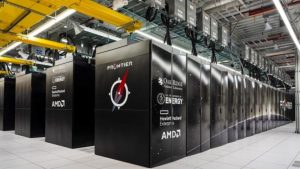Aruba business now accounts for 18% of HPE’s total revenues

With a year-on-year growth of 45%, the Intelligent Edge area of Hewlett Packard Enterprise has led a good year for the manufacturer despite the slight drop in server and storage sales.
Alfredo Yepez, president of HPE Spain, Latin America and Southern Europe, took part in the press conference to assess the current situation of the company, which continues to focus on three key areas for its global business: hybrid cloud, connectivity and artificial intelligence. The executive took up this position at the beginning of 2023.
The first of these is led by the HPE Greenlake platform, which is undoubtedly the platform that is largely supporting the company’s revenues. Revenue generated has grown by 37% and is increasingly driven by pay-as-you-go (as-a-service), up 23% compared to the same period last year.
HPE GreenLake provides businesses with a flexible, managed way to consume IT resources, combining the flexibility of the cloud with the ubiquity of on-premises resources. This enables organisations to optimise their IT operations and adapt quickly to changing business needs. It is the vendor’s answer to these hybrid needs.

On the other hand, Yepez emphasised the growing weight of its intelligent connectivity division, where HPE Aruba Networking solutions already account for 18% of total revenue thanks to 45% growth over the last financial year, thus making good on the acquisition of Aruba Networks made in 2015.
This division has been growing due to its complete line of products and solutions covering network infrastructure (switching, wireless), network management (Aruba Central), network security (ClearPass), location and presence analytics (Meridian), software-defined networking (SDN) and everything related to IoT and Edge Computing.
Last but not least, HPE has been betting on its high-performance computing solutions following the acquisition of Cray, which have grown by around 25% this year, especially in the last two quarters of its fiscal year.
The manufacturer is finding huge customer interest in using Cray’s supercomputing for artificial intelligence-related processes. Its strategy to respond to this demand is a cloud services model that covers the different AI-related workloads, from model development to training, inference and algorithm tuning.
One of the examples proposed by Yepez is the Frontier supercomputer, one of the most powerful and efficient in the world, in which $1.3 billion has been invested.

It is the first exascale supercomputer and currently holds the top position in the Top500 ranking thanks to its nearly 9 million cores, capable of delivering 1094 sustained PFlop/s and peaks at 1678 PFlops/s. It is difficult to get an idea of this computing power, but it is interesting to know that it almost doubles the sustained floating point operations per second of its closest competitors, the Aurora (also from HPE) and Eagle (Microsoft) supercomputers.
Thanks to the pay-per-use model in the cloud, any organisation, regardless of its size and resources, could make use of these supercomputers.
Across its overall business, HPE increased its annual revenue by 5.5% compared to the previous fiscal year. Only sales of servers and storage systems declined (7 per cent and 1 per cent respectively), although Yepez blamed this mainly on the trend of companies consuming these resources as a service rather than purchasing them outright.